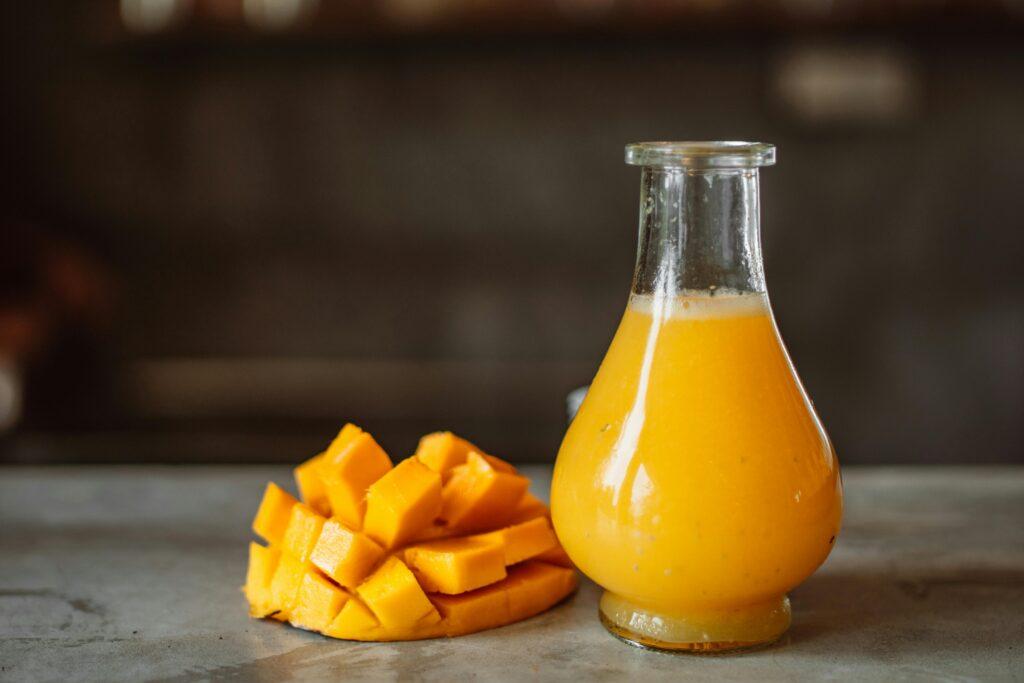Introduction:
In the realm of tropical fruits, few can rival the mango for its sublime flavor, lush texture, and enchanting aroma. Originating from the sun-kissed orchards of India, mangoes have earned a place of honor in culinary traditions around the world. In this article, we embark on a journey to explore the diverse and exquisite varieties of Indian mangoes, each offering its own unique taste, texture, and culinary possibilities.
I. The Alphonso: King of Mangoes
A. Introduction to Alphonso Mango:
Known as the “King of Mangoes,” the Alphonso mango is revered for its rich, creamy texture and intense sweetness. Originating from the coastal regions of western India, particularly Maharashtra, Alphonso mangoes are celebrated for their unparalleled flavor and aroma.
B. Culinary Uses:
The Alphonso mango is prized for its versatility in the kitchen, lending itself beautifully to both sweet and savory dishes. Its luscious flesh makes it ideal for desserts such as mango lassi, mango ice cream, and mango cheesecake. Additionally, Alphonso mangoes add a burst of tropical flavor to savory dishes like mango salsa, mango curry, and grilled mango chicken.
C. Season and Availability:
The peak season for Alphonso mangoes typically spans from April to June, with the fruit reaching its peak ripeness during this time. While Alphonso mangoes are primarily cultivated in India, they are also exported to various countries around the world, albeit in limited quantities due to their high demand and exclusivity.
II. The Kesar: Saffron-Infused Sweetness
A. Introduction to Kesar Mango:
Named for its saffron-like aroma and golden color, the Kesar mango is renowned for its delicate fragrance and sweet, floral flavor. Hailing from the western state of Gujarat in India, Kesar mangoes are cherished for their unique taste and culinary versatility.
B. Culinary Uses:
Kesar mangoes are prized for their natural sweetness, making them perfect for a wide range of desserts and beverages. From traditional Indian sweets like mango shrikhand and mango kulfi to refreshing mango smoothies and milkshakes, Kesar mangoes lend their distinctive flavor to a variety of culinary creations.
C. Season and Availability:
Similar to Alphonso mangoes, Kesar mangoes are in season from April to June, with their availability extending into the summer months. While Kesar mangoes are predominantly consumed in India, they are also exported to select markets around the world, offering consumers outside of India the opportunity to experience their unique flavor.
III. The Dasheri: Sweet and Succulent
A. Introduction to Dasheri Mango:
Originating from the northern state of Uttar Pradesh in India, Dasheri mangoes are renowned for their sweet, succulent flesh and thin skin. Named after the village of Dasheri where they were first cultivated, these mangoes are prized for their exquisite taste and aroma.
B. Culinary Uses:
Dasheri mangoes are highly versatile in the kitchen, lending themselves to a wide range of culinary applications. Whether enjoyed fresh as a snack, blended into smoothies, or used in desserts like mango phirni and mango chutney, Dasheri mangoes add a burst of sweetness to any dish.
C. Season and Availability:
The peak season for Dasheri mangoes typically spans from May to July, overlapping with other Indian mango varieties like Alphonso and Kesar. While Dasheri mangoes are primarily consumed domestically in India, they may also be available in select international markets during the mango season.
IV. The Totapuri: Tart and Tangy
A. Introduction to Totapuri Mango:
Characterized by its elongated shape and distinctive tart flavor, the Totapuri mango is a unique variety native to India. Named for its beak-like shape resembling a parrot’s beak, Totapuri mangoes are prized for their tangy taste and firm texture.
B. Culinary Uses:
Totapuri mangoes are commonly used in the preparation of beverages, relishes, and savory dishes. Their tart flavor adds a refreshing zing to mango juice, mango smoothies, and mango sorbet, while their firm texture holds up well in chutneys, pickles, and salads.
C. Season and Availability:
The peak season for Totapuri mangoes typically spans from April to July, making them available for a longer duration compared to other Indian mango varieties. While Totapuri mangoes are predominantly consumed in India, they may also be exported to select international markets during the mango season.
Conclusion:
In conclusion, Indian mangoes offer a tantalizing array of flavors, textures, and culinary possibilities, each variety a testament to the richness and diversity of India’s agricultural heritage. Whether indulging in the creamy sweetness of Alphonso mangoes, savoring the floral notes of Kesar mangoes, relishing the succulence of Dasheri mangoes, or enjoying the tangy zest of Totapuri mangoes, there’s a mango variety to suit every palate and occasion. So, next time you’re craving a taste of the tropics, consider exploring the exquisite varieties of Indian mangoes and embark on a culinary adventure like no other.

